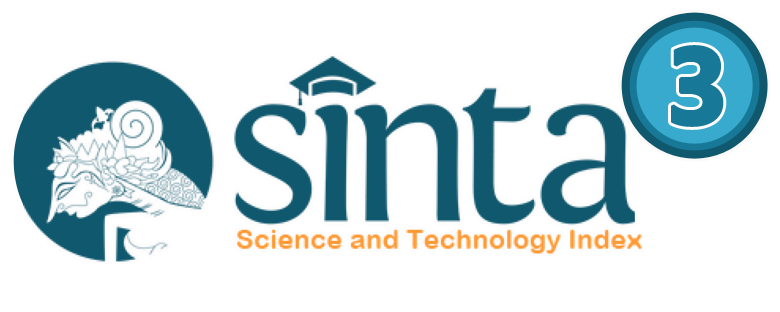Assessing the Moderating Effect of Bank Size on the Interaction between Bank Health Level and Company Value in Digital Banks
DOI:
https://doi.org/10.35838/jrap.2024.011.02.27Keywords:
Bank Health Level, Company Value, Firm Size, RGECAbstract
Purpose: This study aims to analyze the effect of bank health level using the RGEC method on company value with bank size as a moderating variable in digital banks registered with the OJK Republic Indonesia in 2021-2023.
Methodology: The population of this study was 15 companies. The sampling technique used purposive sampling for 7 companies. The data analysis method used Moderating Structural Equation Modelling (MSEM) with Smart-PLS 4.
Finding: The results of the study show that bank health level and bank size affects the company value. Bank size can strengthen the influence of bank health level on the company value.
Implication: This study provides insight to digital banks in Indonesia where it is necessary to pay attention to bank health level factors that can affect company value as a reflection of investor assessments in making investment decisions. Such as risk profile, GCG, and earnings factors which play a very important role in describing the health condition of a bank. The other side, companies must be able to optimize the use of bank capital for productive activities that can generate profits. Bank size is also considered by investors so it affects the company value.
Originality: the originality of this study is in the innovative methodological approach and relevant practical implications. This study uses bank size as a moderating variable. Analysis with a moderation effect is used to test whether the moderating variable can strengthen or weaken the influence between the exogenous variables and the endogenous variable.
Downloads
References
Aprilia, N. D. (2021). Perkembangan ekonomi digital Indonesia. Ekonomi Pertahanan, 7(2), 245-259.
Aprilia, W., & Hapsari, N. (2021). Pengaruh Tingkat Kesehatan Bank Melalui Metode RGEC Terhadap Nilai Perusahaan (Studi Kasus Pada Perusahaan Perbankan Yang Terdaftar di Bursa Efek Indonesia Periode 2016-2020). Neraca Keuangan : Jurnal Ilmiah Akuntansi Dan Keuangan, 16(2), 13–27. https://doi.org/10.32832/neraca.v16i2.5432
Apriyanti, A., Hariyani D.S., Azizah, M., & Wahyuandari, W. (2023). Pengaruh Tingkat Kesehatan Bank Terhadap Nilai Perusahaan Perbankan Negara Asean. Jurnal Sekretari Dan Manajemen, 7(1), 1–7.
Asykarulloh, A., Araffi, M., Mahmudah, D., Prihatin, R., & Al Umar, A. U. A. (2023). Pengaruh Faktor Fundamental terhadap Harga Saham Bank Digital di Indeks Saham Syariah. Jurnal Analisa Akuntansi Dan Perpajakan, 7(1), 19–28. https://doi.org/10.25139/jaap.v7i1.5822
Bangun, R., & Listorini, A. (2017). Managing Indonesian Banking Competition and Stability of Finance. The International Journal of Social Sciences and Humanities Invention, 4(8). https://doi.org/10.18535/ijsshi/v4i8.24
BI Regulation No. 13/1/PBI/2011 about General Bank Health Level Assessment. 2011. https://www.ojk.go.id/id/regulasi/Documents/Pages/PBI-tentang-Penilaian-Tingkat-Kesehatan-Bank-Umum/96.pdf
Biswas, S. (Sonny), Gómez, F., & Zhai, W. (2017). Who needs big banks? The real effects of bank size on outcomes of large US borrowers. Journal of Corporate Finance, 46, 170–185. https://doi.org/10.1016/j.jcorpfin.2017.06.012
Cahyani, N. K. S. I., Pradnyani, N. L. P. S. P., & Artaningrum, R. G. (2023). The Effect of Profitability, Liquidity, and Company Size on Company Value in The Banking Subsector. International Journal of Pertapsi, 1(1), 32–40. https://doi.org/10.9744/ijp.1.1.32-40
Dang, C., Li, Z. F., & Yang, C. (2013). Measuring Firm Size in Empirical Corporate Finance. Corporate Finance: Valuation. https://doi.org/10.2139/ssrn.2345506
Febrin, S., & Sulhan, M. (2022). Analisis Pengaruh Penilaian Kesehatan Bank Melalui Komponen RGEC Terhadap Nilai Perusahaan Bank Umum Syariah di Indonesia. Jurnal Ekonomi dan Bisnis, 108.
Hair, J. F., Risher, J. J., Sarstedt, M., & Ringle, C. M. (2019). When to use and how to report the results of PLS-SEM. European Business Review, 31(1), 2–24. https://doi.org/10.1108/EBR-11-2018-0203
Husna, A., & Satria, I. (2019). Effects Of Return on Asset, Debt To Asset Ratio, Current Ratio, Firm Size, And Dividend Payout Ratio On Firm Value. International Journal of Economics and Financial Issues, 9(5), 50–54. https://doi.org/10.32479/ijefi.8595
Kasmir. (2012). Analisis Laporan Keuangan (Cetakan Keenam). PT Raja Grafindo.
Kholiavko, N. I., & Kozlianchenko, O. M. (2021). Global Trends in the Banking Sector Digitalization. The Problems of Economy, 2(48), 217–224. https://doi.org/10.32983/2222-0712-2021-2-217-224
Laila, C., & Purnamasari, P. E. (2022). Peran Ukuran Perusahaan Dalam Memoderasi Tingkat Kesehatan Bank Terhadap Harga Saham. SEIKO: Journal of Management & Business, 4(3), 389–402.
Linawati, N., Moeljadi, M., Djumahir, & Aisjah, S. (2022). The effect of profitability and bank size on firm value sustainability: The mediating role of capital structure. Investment Management and Financial Innovations, 19(2), 331–343. https://doi.org/10.21511/imfi.19(2).2022.29
Maheswari, I. G. A. G., & Suryanawa, I. K. (2016). Pengaruh Tingkat Kesehatan Bank dan Ukuran Bank Terhadap Nilai Perusahaan. E-Jurnal Akuntansi Universitas Udayana, 16(2), 1319-1346.
Marsella, P., & Pangestuti, D. C. (2023). Assessment of bank’s health using analysis risk profile, good corporate governance, earnings, capital (RGEC). International Journal of Research in Business and Social Science (2147- 4478), 12(3), 237–248. https://doi.org/10.20525/ijrbs.v12i3.2571
Melinda, V., Sari, N. K., & Ilmi, M. (2023). Analysis of the Health Level of Digital Bank Registered with OJK Using the RGEC Method (Risk Profile, Good Corporate Governance, Earnings, Capital). In Progress Conference, 6(1), 169–178.
Melnychenko, S., Volosovych, S., & Baraniuk, Y. (2020). Dominant Ideas of Financial Technologies in Digital Banking. Baltic Journal of Economic Studies, 6(1), 92. https://doi.org/10.30525/2256-0742/2020-6-1-92-99
OJK Regulation No. 12/POJK.03/2021 about The Implementation of Digital Banking Services. 2021. https://www.ojk.go.id/id/regulasi/Documents/Pages/Bank-Umum/POJK%2012%20-%2003%20-2021.pdf
Panjaitan, D. K., & Muslih, M. (2019). Manajemen Laba: Ukuran Perusahaan, Kepemilikan Manajerial dan Kompensasi Bonus. Jurnal ASET (Akuntansi Riset), 11(1), 1–20. https://doi.org/10.17509/jaset.v11i1.15726
Prasidya, T. C. I. T., & Dewi, W. C. (2023). Digital Economy to Boost Economy Recovery Post-Pandemic: Indonesia’s Strategic Position As New Economic Power In Southeast Asia. Global South Review, 4(2), 81. https://doi.org/10.22146/globalsouth.83331
Putri, R. L., & Suryono, B. (2017). Analisis Tingkat Kesehatan Bank (Pendekatan RGEC) Pada Bank Rakyat Indonesia 2013-2015. Jurnal Ilmu Dan Riset Akuntansi (JIRA), 6(8).
Ratnawati, K., & Susilowati, C. (2022). Implication of Digital Economy and Financial Technology Towards Performance of Financial Services Sector in Indonesia. MIX: JURNAL ILMIAH MANAJEMEN, 12(1), 140. https://doi.org/10.22441/jurnal_mix.2022.v12i1.011
Riadi, K. S., Atmadja, A. T., SE., A., & Wahyuni, M. A. (2016). Penilaian Tingkat Kesehatan Bank dengan menggunakan metode RGEC (Risk Profile, Good Corporate Governance, Earnings, dan Capital) pada PT. Bank Mandiri (Persero), Tbk periode 2013-2015. JIMAT (Jurnal Ilmiah Mahasiswa Akuntansi) Undiksha, 6(3).
Santo, V. A., & Hivianto, L. S. (2023). The Influence of Environmental Performance and Financial Performance on Company Value. JRAK: Jurnal Riset Akuntansi Dan Komputerisasi Akuntansi, 14(2), 101–118. https://doi.org/10.33558/jrak.v14i2.6973
Sarstedt, M., Ringle, C. M., & Hair, J. F. (2021). Partial Least Squares Structural Equation Modeling. In Handbook of Market Research (pp. 1–47). Springer International Publishing. https://doi.org/10.1007/978-3-319-05542-8_15-2
Song, D. (2022). Investment Value Analysis of Listed Companies based on Stock Valuation Methods. Scientific Journal of Technology, 4(7), 71–77. https://doi.org/10.54691/sjt.v4i7.1278
Suhardi, H. (2021). Pengaruh Leverage, Profitabilitas, dan Ukuran Perusahaan terhadap Nilai Perusahaan Manufaktur Sektor Industri Dasar dan Kimia yang Terdaftar di BEI. Jurnal Manajemen Bisnis Dan Kewirausahaan, 5(1), 77. https://doi.org/10.24912/jmbk.v5i1.10834
Tanheitafino, C., Helma Malini, Wendy, Giriati, & Ramadania. (2023). The Effect of Market Capitalization, Trading Volume, Book Value, and Capital Structure on Share Prices. International Journal of Scientific Research and Management, 11(01), 4418–4428. https://doi.org/10.18535/ijsrm/v11i01.em02
Yam, J. H. (2023). Non-Performing Loan Dan Bank Sustainability Performance. Deepublish.
Zhou, G., Liu, L., & Luo, S. (2022). Sustainable development, ESG performance and company market value: Mediating effect of financial performance. Business Strategy and the Environment, 31(7), 3371–3387. https://doi.org/10.1002/bse.3089
Downloads
Published
Issue
Section
License
Authors who publish with this journal agree to the following terms:
- Authors retain copyright and grant the journal right of first publication with the work simultaneously licensed under a Creative Commons Attribution-ShareAlike 4.0 International License that allows others to share the work with an acknowledgement of the works authorship and initial publication in this journal.
- Authors are able to enter into separate, additional contractual arrangements for the non-exclusive distribution of the journals published version of the work (e.g., post it to an institutional repository or publish it in a book), with an acknowledgement of its initial publication in this journal.
- Authors are permitted and encouraged to post their work online (e.g., in institutional repositories or on their website) prior to and during the submission process, as it can lead to productive exchanges, as well as earlier and greater citation of published work (See The Effect of Open Access).














